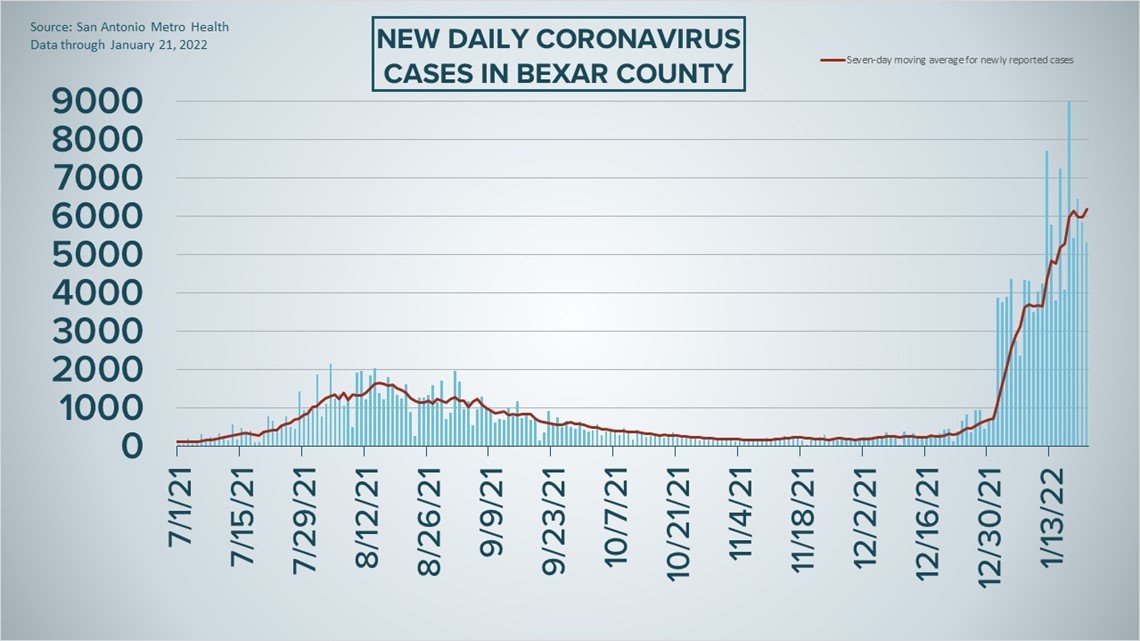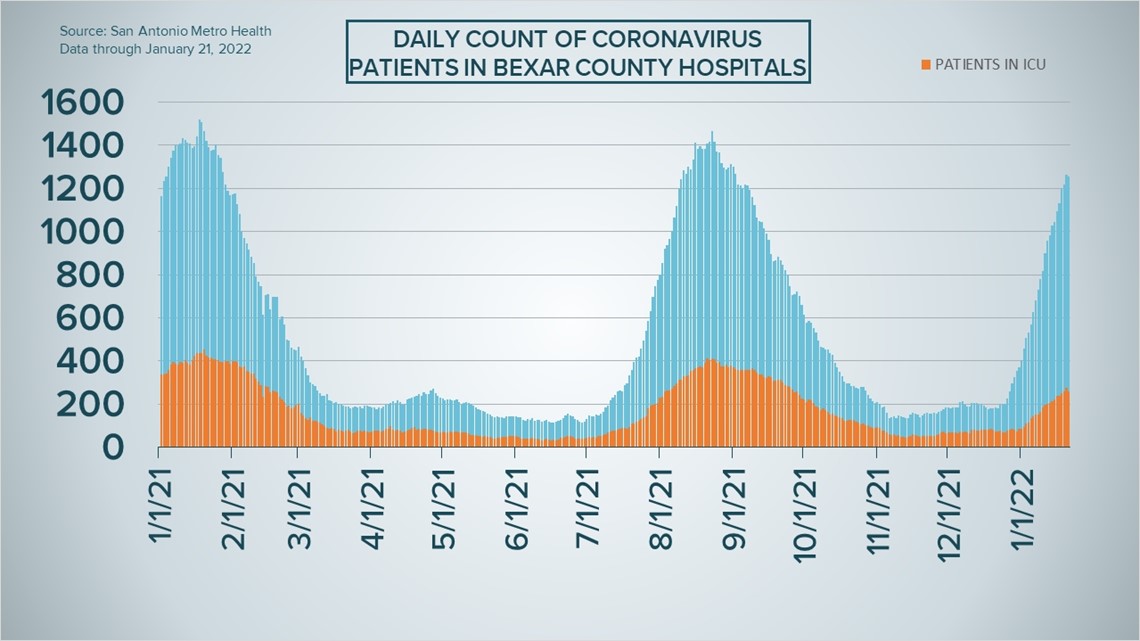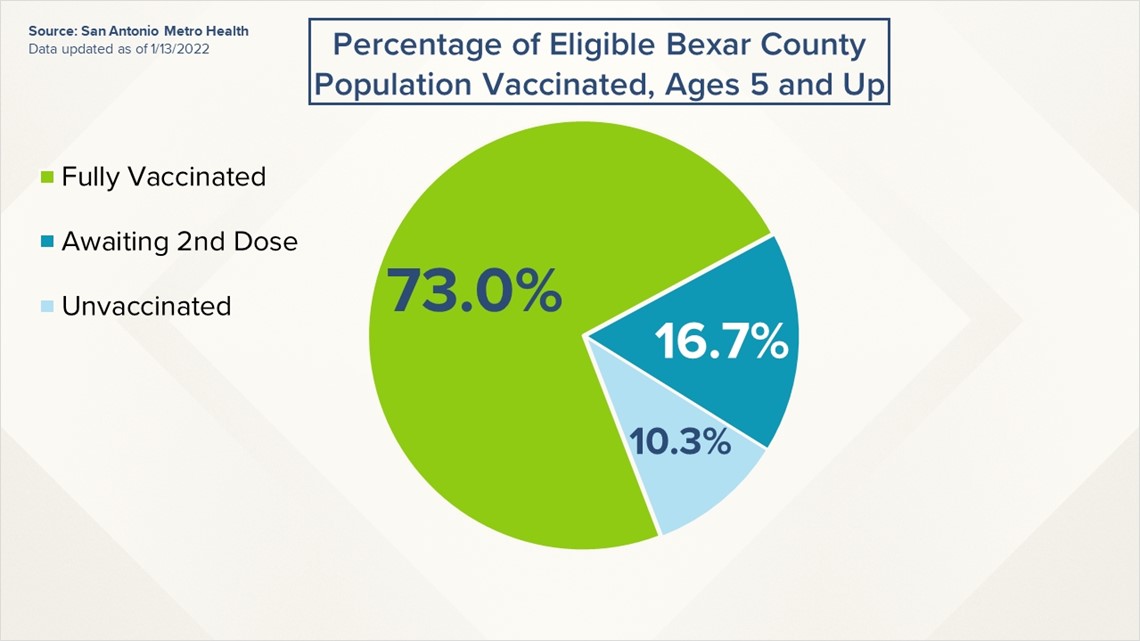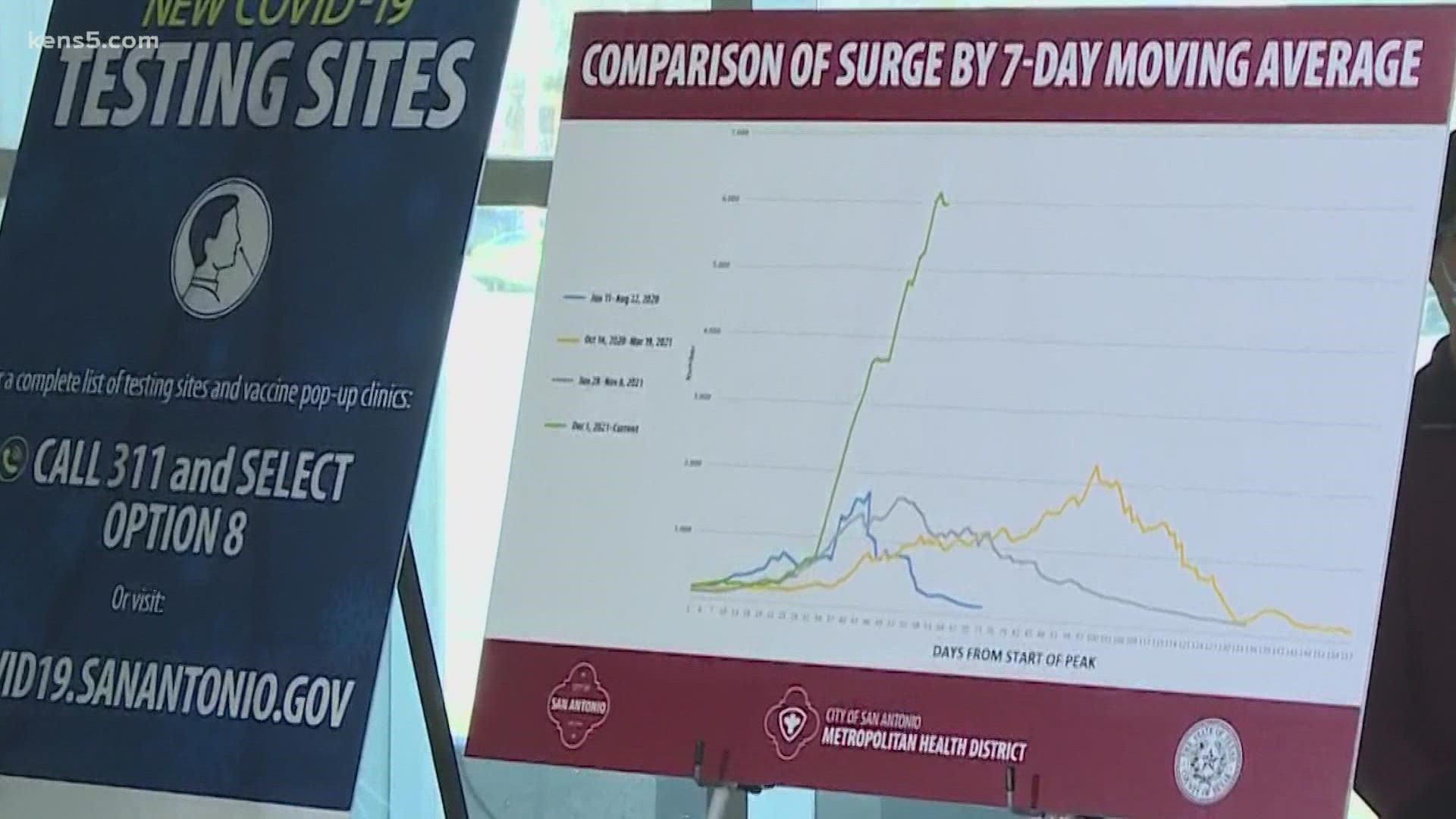SAN ANTONIO — Mayor Ron Nirenberg warned on Friday that the area's COVID-19 risk level could hit critical in the coming weeks.
It has been at severe for much of this month, with Metro Health indicating that it's "worsening" as the San Antonio area enters a third year of the coronavirus pandemic.
"We know it's been a rough two years as we combat COVID-19 and we understand that many people are experience pandemic fatigue that affects you physically, emotionally and mentally," Nirenberg said at a Wednesday news conference from the Alamodome. "You are not alone. I would ask you to think of the healthcare workers, the nurses, the teachers, the firefighters, and first responders who have been dealing with this for a long time."
Later in the afternoon, health authorities announced 5,307 new COVID-19 cases as Bexar County's total for the pandemic approaches 443,000. Friday was also the deadliest pandemic day since early October, with 16 new virus-related deaths being reported.
This week also brought the arrival of a federally operated COVID-19 testing site in Lot C of the Alamodome. Officials urged patience with the long wait times. Testing labs continue to be backlogged due to the increase in demand and delays caused by winter weather.
Metro Health also warned about fake testing sites that are aimed at gaining people's personal information. They are asking people to check the city's vetted locations that are free of charge through this link.
Officials also once again urged people to get vaccinated. While they are seeing cases of COVID-19 among vaccinated people, the vaccine does work to prevent hospitalization and death.
"Breakthrough infections are not uncommon, but you are far better off being fully vaccinated," Metro Health Director Claude A. Jacob said.
88.9 percent of eligible individuals have received at least one dose of the COVID-19 vaccine. 72 percent of eligible individuals are fully vaccinated, according to Metro Health.
As of Friday, 1,257 Bexar County residents were hospitalized with the coronavirus, which is fewer than Thursday. It had been four weeks since the area saw a decrease in the number of local patients.
How Bexar County is trending




Vaccine Progress in Bexar County
The following numbers are provided by San Antonio Metro Health. A full breakdown can be found here.
- 1.699 million eligible Bexar County residents have received at least one dose of the coronavirus vaccine as of Thursday, Jan. 13, representing 89.7% of the county's population eligible (those over the age of 4) to receive a vaccination.
- 1.383 million eligible Bexar County residents are fully vaccinated as of Thursday, Jan. 13, representing 73% of the county's population eligible to receive a vaccination.


The CDC states that "when a high percentage of the community is immune to a disease (through vaccination and/or prior illness)," that community will have reached herd immunity, "making the spread of this disease from person to person unlikely."
The City of San Antonio breaks down the vaccination rates by zip code on Metro Health's Vaccination Statistics page.
Coronavirus in Texas
The total number of coronavirus cases in the state since the pandemic began grew by 66,246 on Friday, according to the Texas Department of State Health Services. That total includes 55,886 new confirmed cases and 10,360 new probable cases. More details can be found on this page.
Friday's figures bring the total number of Texans diagnosed with COVID-19 to more than 5.813 million.
An additional 169 Texans have died from virus complications, meanwhile, raising the statewide death toll to 76,612.
Coronavirus symptoms
The symptoms of coronavirus can be similar to the flu or a bad cold. Symptoms include fever or chills, cough, shortness of breath or difficulty breathing, fatigue, muscle or body aches, headache, new loss of taste or smell sore throat, congestion or runny nose, nausea or vomiting, and diarrhea, according to the Centers for Disease Control.
Most healthy people will have mild symptoms. A study of more than 72,000 patients by the Centers for Disease Control in China showed 80 percent of the cases there were mild.
But infections can cause pneumonia, severe acute respiratory syndrome, kidney failure, and even death, according to the World Health Organization. Older people with underlying health conditions are most at risk.
Experts determined there was consistent evidence these conditions increase a person's risk, regardless of age:
- Chronic kidney disease
- COPD (chronic obstructive pulmonary disease)
- Obesity (BMI of 30 or higher)
- Immunocompromised state (weakened immune system) from solid organ transplant
- Serious heart conditions, such as heart failure, coronary artery disease, or cardiomyopathies
- Sickle cell disease
- Type 2 diabetes
- The CDC believes symptoms may appear anywhere from two to 14 days after being exposed.
Human coronaviruses are usually spread...
- Between people who are in close contact with one another (within about 6 feet).
- Through respiratory droplets produced when an infected person coughs, sneezes or talks. These droplets can land in the mouths or noses of people who are nearby or possibly be inhaled into the lungs.
- Some recent studies have suggested that COVID-19 may be spread by people who are not showing symptoms.
Help stop the spread of coronavirus
- Stay home when you are sick.
- Eat and sleep separately from your family members
- Use different utensils and dishes
- Cover your cough or sneeze with your arm, not your hand.
- If you use a tissue, throw it in the trash.
Find a Testing Location
City officials recommend getting a COVID-19 test if you experience fever or chills, cough, shortness of breath or difficulty breathing, fatigue, muscle or body aches, headache, new loss of taste or smell, sore throat, congestion or runny nose, nausea or vomiting, or diarrhea.
Here's a Testing Sites Locator to help you find the testing location closest to you in San Antonio.
Latest Coronavirus Headlines
- 'Help us contain the virus' | City, county officials warn the COVID-19 risk level could hit critical
- No, the CDC doesn’t count positive results from at-home COVID-19 tests
- Booster shots needed against omicron, CDC studies show
- Can you write off home offices, PPE due to COVID-19? It depends
- Coronavirus Tracker: Bexar County hospitalizations reach highest levels since early September
- Federal COVID-19 testing site opens at the Alamodome
- Tickets for Winter Olympics won't be sold to general public
- Texas mother who lost daughter to flu shares importance of getting vaccinated

